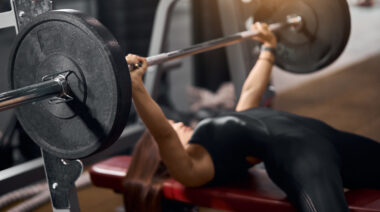The word mobility has flooded the fitness culture these last few years. With the rise of gymnastics and martial arts inspired “movement” training from numerous different “gurus,” mobility has finally earned a seat at the head table with the likes of strength, power, and aesthetics.
The word mobility has flooded the fitness culture these last few years. With the rise of gymnastics and martial arts inspired “movement” training from numerous different “gurus,” mobility has finally earned a seat at the head table with the likes of strength, power, and aesthetics.
We’ve become a fitness culture obsessed more with beautiful movements, positions, and flows rather than with inflated biceps. Gone are the days when our heroes oiled up to pose for audiences and magazine covers. We now idolize those who post short videos of parkour, gymnastics skills, and ground flows.
I love that as a fitness culture our collective values are shifting toward moving in a smooth and holistic way, but I fear that how we think of mobility still fails to capture its true essence.
We’ve compartmentalized mobility into another aspect of fitness when it actually is an expression of your total fitness into the rest of your life.
Breaking Down Mobility
Mobility is defined as the ability to move or be moved freely and easily. The definition actually tells us all we need to know.
The “to be moved” aspect applies to passive flexibility, when we stretch to our limits with help from gravity, equipment, or partners. The other aspect is “to move” and means far more for your fitness and life.
This is your active flexibility and strength but also your agility, coordination, balance, and power. It means to not only possess beautiful freedom of movement through many extended ranges of motion, but full strength and control throughout.
The latter half of the definition, moving both “free and easily” is where so many people commonly miss the mark. We work to achieve deep positions or coordinated flows “easily.”
Our mobility though, is not the positions we can achieve after a warm up or many repetitions. If you can easily touch your toes only after warming your body into it, that particular movement is anything but “free.”
Freely and easily describes not only how well you can move and be moved but also when and how you have access to that quality of movement.
Many coaches and teachers have said this before me. Martial arts masters teach that we must be able to kick cold, as conflicts arise quickly and assailants will never allow you a warm up.
Kelly Starrett’s famous Becoming a Supple Leopard analogy has us seek to be ready to chase tonight’s meal at full speed at a moment’s notice. Leopards do not warm up; they must sprint at full anytime or go hungry.
Understand Your Movement Patterns
Movement and mobility are not pieces of your fitness regimen to only be worked on in reps and sets.
Yes, including ample “mobility” and “movement” flows into your training will make you a more able and embodied mover. However, far more important than any of this training is how you understand your movement patterns, mobility, and every other aspect of health and fitness outside of your gym time.
The point of all of this mobility training is to move better all of the time and in every aspect of your life. Only thinking about how you move in the gym misses the very essence of what it means to be mobile.
The best way to improve your mobility then is not in the focused flexibility work that you do, but in paying attention to how you move your body every second of the day.
Yes, the gym work is when you can incite big changes. But, your time outside the gym is when these changes become integrated into your life and when your awareness informs the actions that you will take in your next training session.






